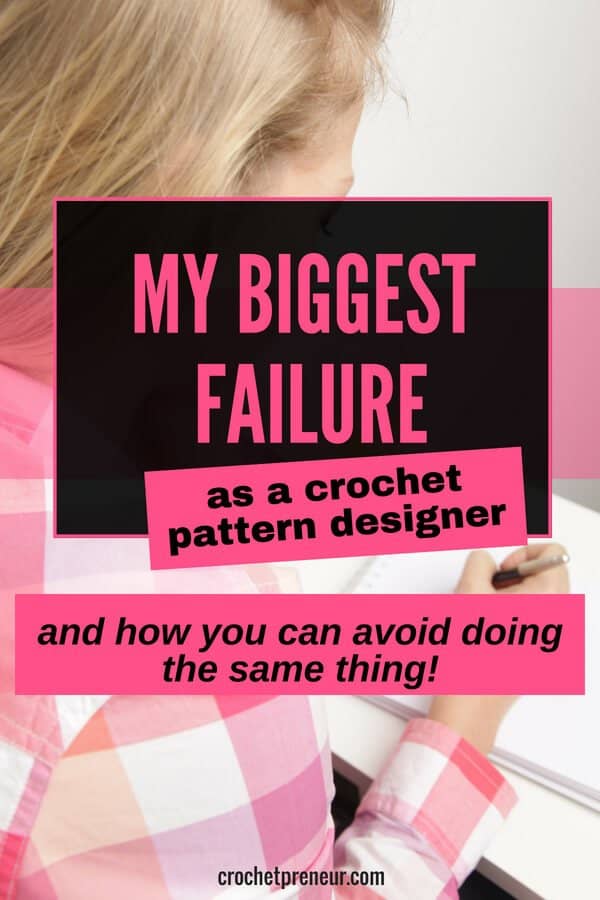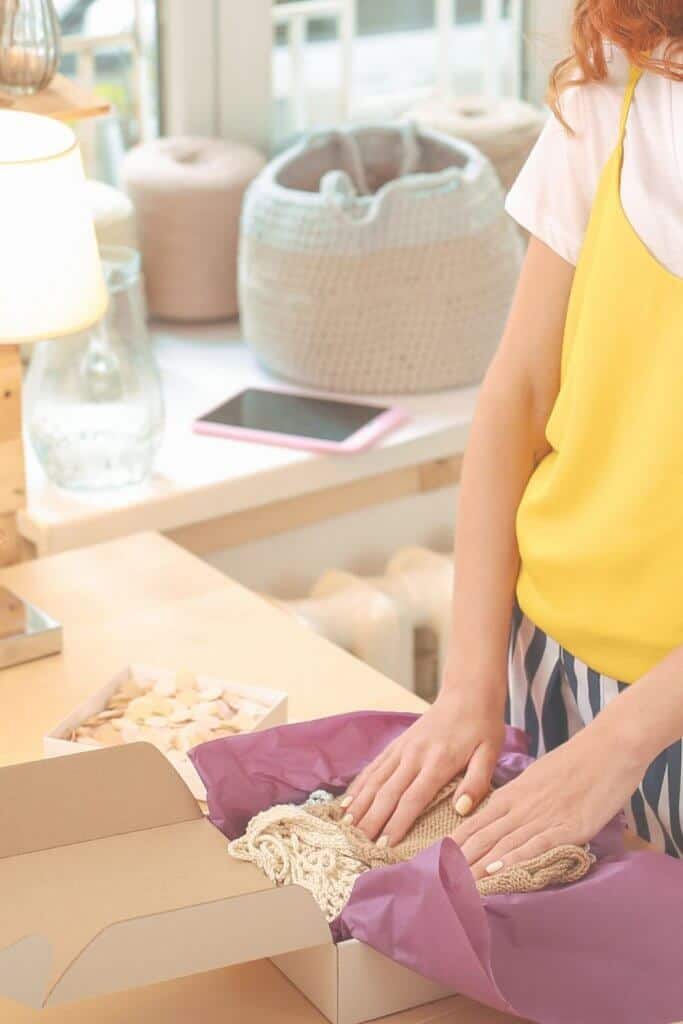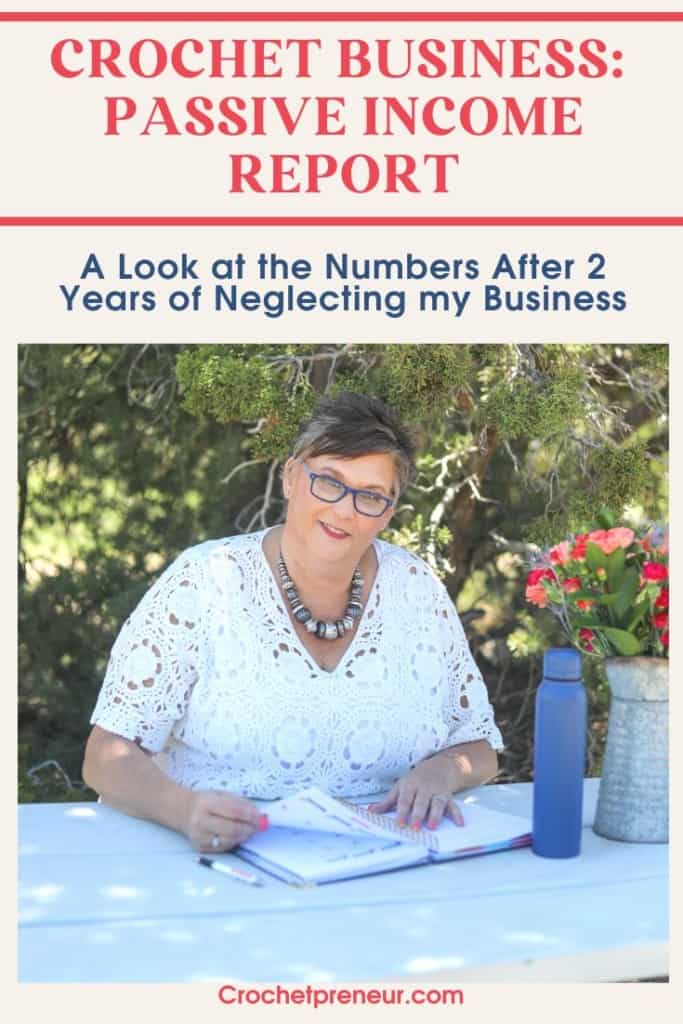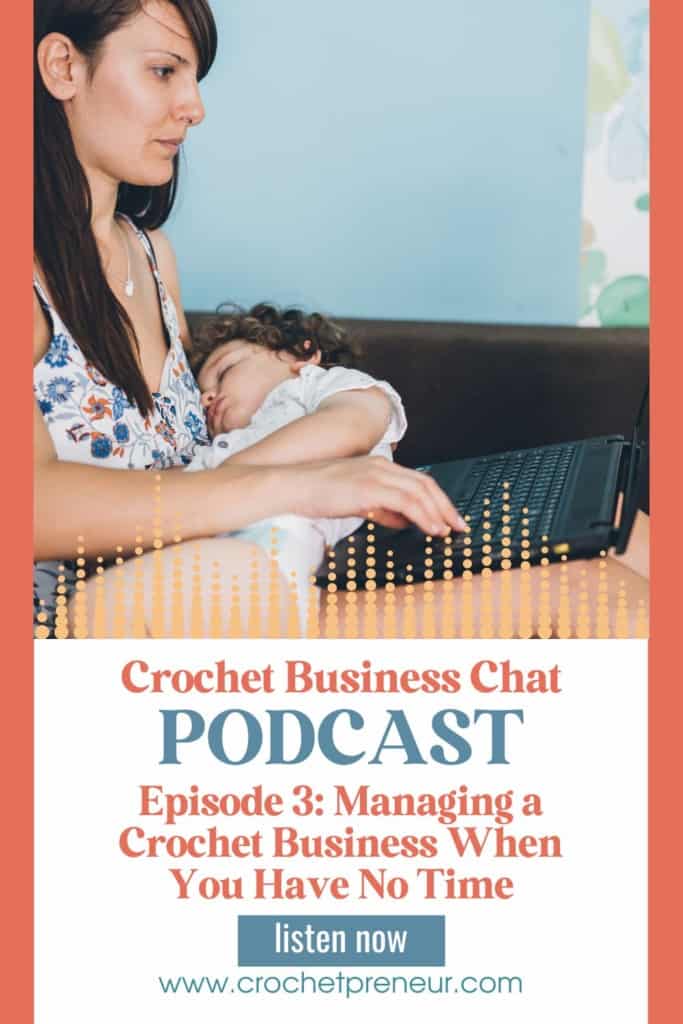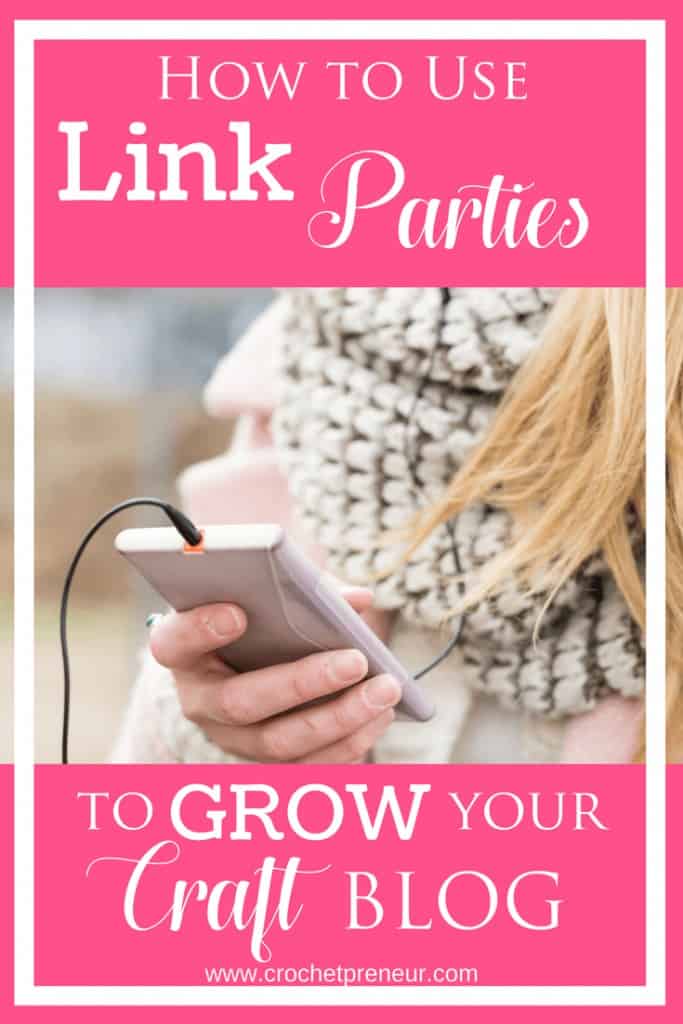Are you a crochet designer wondering how to turn your creative passion into a thriving business? Or perhaps you’re juggling the idea of selling both crochet patterns and finished items but unsure if it’s the right move for you. Let’s explore the challenges and opportunities of launching a crochet brand, how to build a business where you sell crochet patterns and products, and practical tips for gaining traction in a crowded market.
Whatever really feels exciting, I would say go after that first. Get some quick wins and continue just sharing everything that you’re doing online. Consistently post online all of the beautiful work that you’re doing and I think you’re going to develop a a following really quickly.
– Pam GRice, The Crochetpreneur

Should You Sell Crochet Items, Patterns, or Both?
Previously, we discussed the transition from selling crochet products to selling patterns. But does it ever make sense to both sell crochet items and patterns? Usually, I advise crochet business owners to focus on one or the other. But in some circumstances, running two businesses makes sense. Read, watch, or listen below to learn more about when and how to run a business that combines crochet pattern design and physical product sales.

Get Access to Our Entire Vault of Crochet Business Boosting Resources!
Selling Crochet Items and Patterns: Key Considerations
Normally, I advise people to start two separate businesses, one to sell crochet items and one for patterns—and to establish business one before starting up the other. But if you sell particularly intricate designs, you’re in a unique position where you’re speaking to two different target customers.
You’re going to attract some followers who are purely interested in your craftsmanship and not in buying your pattern. On the other hand, you’ll also get adventurous crocheters who do want your pattern. A thoughtful social media strategy can target both of these audiences.

Let’s say you design complex thread crochet patterns like doilies. Showing how you use the designs in your own house—not just as doilies to place on a sofa arm or a dresser but as more modern decor—can create demand to sell both patterns and crochet items. You can do that all within one account.
So yes, in some limited situations, it can work well to sell both crochet items and patterns. But is it the right choice for your crochet business? Here are the key questions every crochet entrepreneur must ask:
1. Time Investment: What Do You Really Have Bandwidth For?
It’s really hard to start two businesses at once, and I generally ask people to focus on one portion of their business to begin with. Get your systems down, get your processes down, build your audience … That’s because managing two customer bases—crocheters who buy patterns and those who want finished goods—effectively doubles your workload.
Consider:
- How many hours per week can you dedicate?
- Do you enjoy creating inventory, or is designing your passion?
- Can you keep up consistency in marketing and customer service for both branches?
💡 Pro tip: If your time is limited, develop systems and processes for one offering first (whether it’s pattern design or finished goods), then expand.
2. Know Your Audience: Not All Followers Are Buyers
Staying with the example of the thread crochet pattern designer, this type of brand attracts not just fellow crocheters but also admirers who wouldn’t attempt the patterns themselves. So you’re going to get a lot of followers who aren’t going to be buying your patterns, but maybe they’ll buy your physical product. It’s important to learn exactly who your followers are and design your social media to reflect their needs.

Actionable steps:
☑️ Survey your current audience. What are they asking for—patterns, gifts, custom pieces?
☑️ Notice comments and DMs: Are people asking, “Where can I buy?” If so, there’s clear demand for finished goods.
☑️ Tailor your social media content to speak to both camps, but understand one may outpace the other in conversions.
The Inventory Dilemma: Avoiding Overwhelm
Building up physical inventory can be risky and overwhelming, especially for time-consuming, intricate items. However, there are some clever ways you can repurpose the physical products you design:
- Sell the Designer Samples: Once you’re done using a piece for pattern photos and marketing, sell that one-of-a-kind finished product. Highlight its exclusivity and the love that went into it.
- Limited Editions: Announce unique, small batches (“Only one available!”), creating urgency and premium value for your creations.
Craft Fairs vs. Online Sales to Sell Crochet Items and Patterns
The romantic allure of craft fairs is real—they’re great for networking, gathering direct feedback, and enjoying the “maker community” buzz. But let’s look at them side by side.
|
Craft Fairs |
Online Sales |
|
Limited audience (local only) |
Global reach |
|
Time-intensive |
Flexible timing |
|
Costs for booths |
Repeatable content & marketing |
If you want quicker wins and broader impact, selling online is easier and scalable. Craft fairs can be fun and worthwhile for exposure or if you already have connections, but start small—a shared booth or small display with a friend is perfect.

organize your business
Free Crochet Business Planner
Get this handy printable crochet business binder to help you keep your business organized and running smoothly. Always have your business details, brand kit, contacts, and more, available at your fingertips!
Social Media Strategy: Building Your Online Crochet Empire
Many crochet business owners—especially introverts!—find it challenging to post online consistently. I have to force myself to do it. I’m more of an introvert, I’m more of a quiet person. I just am task-oriented. I want to do my things. And then I’m like, “Oh, yeah. I got to get my face out there.”
Tips for Social Consistency
🗃️ Batch Content: Film or photograph multiple short videos in one day (hands crocheting, time lapses of projects, behind-the-scenes tidbits).
,🚀 Share Progress: “Here’s a future doily I’m working on…” Tease upcoming releases.
🔄 Mix Content Types: Alternate between finished projects, works-in-progress, tips, and personal stories.
✨ Keep It Simple: Quick, 15- to 30-second clips. You don’t need elaborate edits or on-camera explanations.
🧠 Educate and Inspire: Show different uses for your designs (vintage doilies as modern home décor, for example).
Creating Demand: Live Sales and “One-of-a-Kind” Offers
Today’s social platforms are prime for live shopping events and “flash sales,” even for handmade, niche crafts. I recommend:
- Instagram & Facebook Live Sales: Demo your item, describe its making, and prompt real-time purchases. “First to comment gets it!”
- Event Hype: Announce sales ahead of time to build anticipation (e.g., “Only one available this Friday at 7pm EST!”).
This method works brilliantly when you don’t want or can’t produce large quantities. It also leverages your audience’s natural excitement for exclusive pieces.
Leverage Community: Get the Word Out
Networking with others in the crochet business community is an excellent way to gain exposure, brainstorm solutions, and find support. Join online groups like the Crochet Business Chat Facebook Group, where you can connect with other passionate, driven, motivated, and supportive crochet business owners. To make the most of your group participation, engage in these ways:
- Share Your Story: Post about new releases, behind-the-scenes peeks, or requests for shares.
- Collaborate: Few direct competitors = more support and shares among your fellow designers and artists.
- Ask for Help: State that you’re new and would love support—authenticity draws people in!
Next Steps to Sell Crochet Items and Patterns Successfully
Sometimes the hardest part of running your own business is just getting started. Once you’ve weighed your options, and you’ve decided selling both patterns and crochet products is right for you, here are some quick moves you can make to move your business forward:
👟 Create a small, manageable inventory of easy, quick-sell items
👟 Experiment with shared craft fair booths
👟 Amp up your online posting consistency—whether or not you’re an introvert
Action Steps for New Crochet Business Owners
Whether you’re just starting out or trying to scale your existing crochet venture, here’s your blueprint:
- Decide Your Focus—but Stay Flexible: Patterns or products? Pick one to master, but allow for small-scale experiments.
- Leverage What You Already Make: Sell designer samples and small batches rather than producing mass inventory.
- Test the Waters: Try a shared table at a craft fair, or a live sale on Instagram. Track what brings in actual revenue—not just social likes!
- Prioritize Content Consistency: Batch-create, schedule, and keep it simple. Show your working process, not just finished items.
- Engage in Community: Share, collaborate, and support others. Don’t be afraid to ask for help and exposure.
Final Thoughts
Launching your crochet business is a journey. You’ll face choices about direction, product lines, and where to invest your time. The key is to follow your excitement, start small, keep showing up online, and lean into your unique creative voice. Don’t let perfectionism or fear hold you back from experimenting and sharing your story—your following (and sales) will grow with every step.


